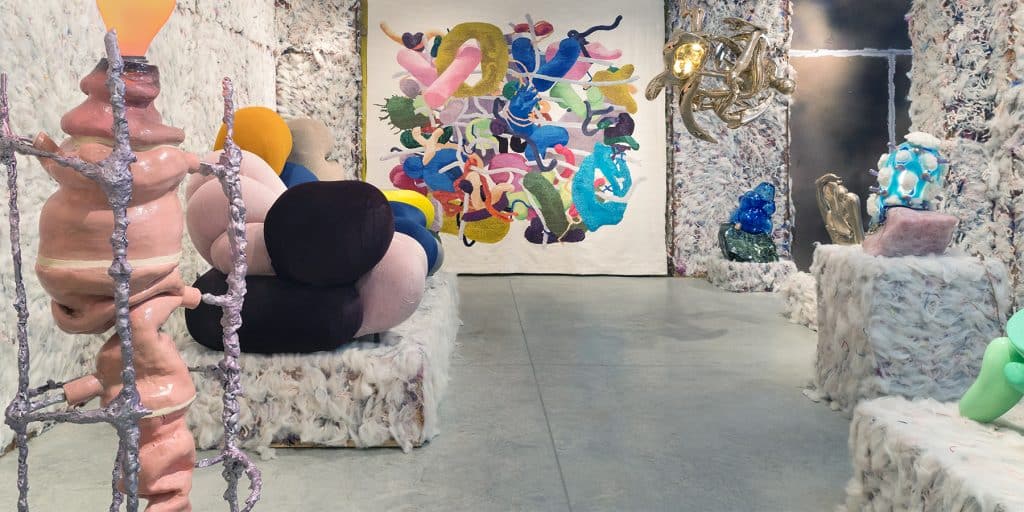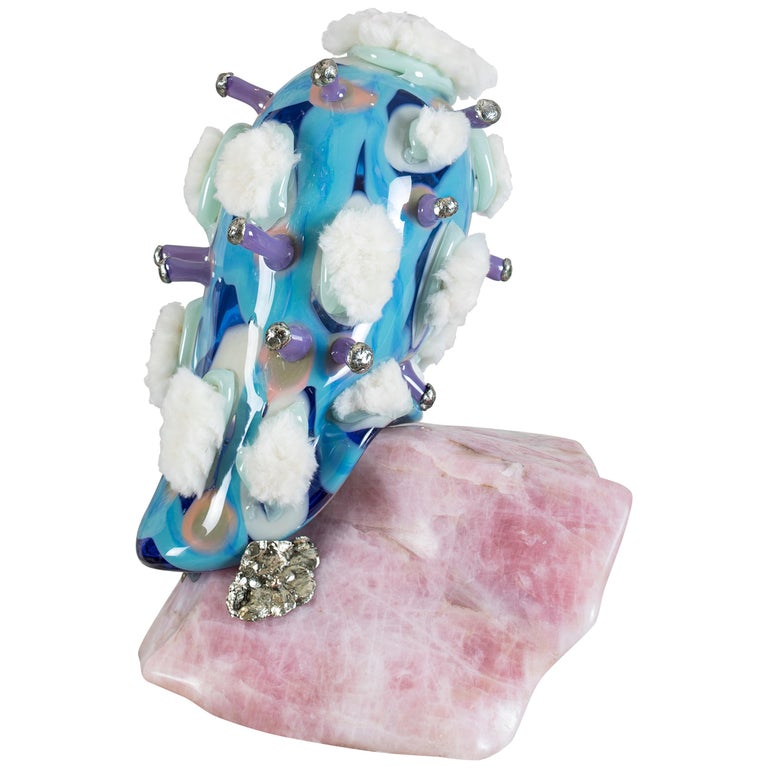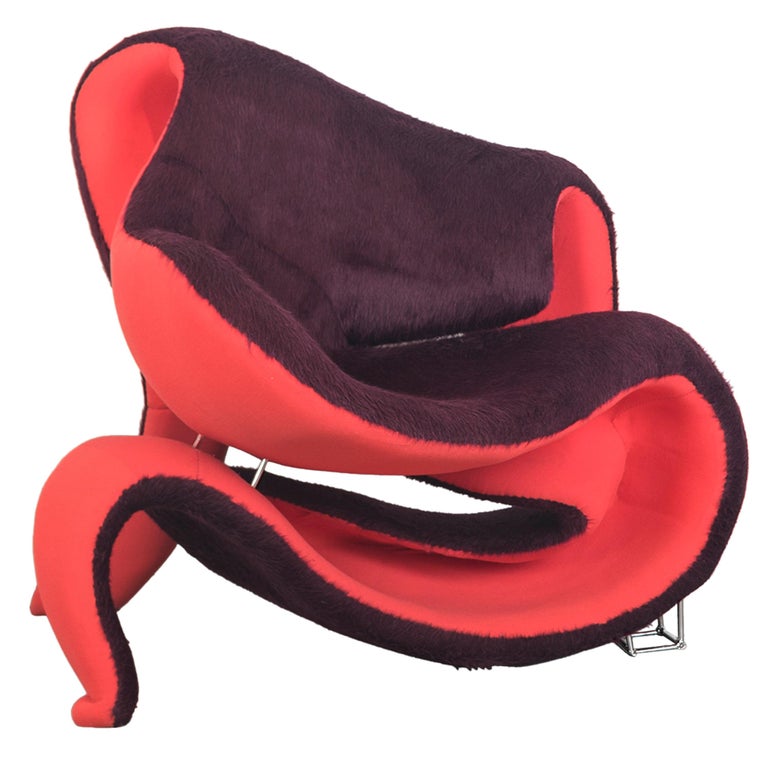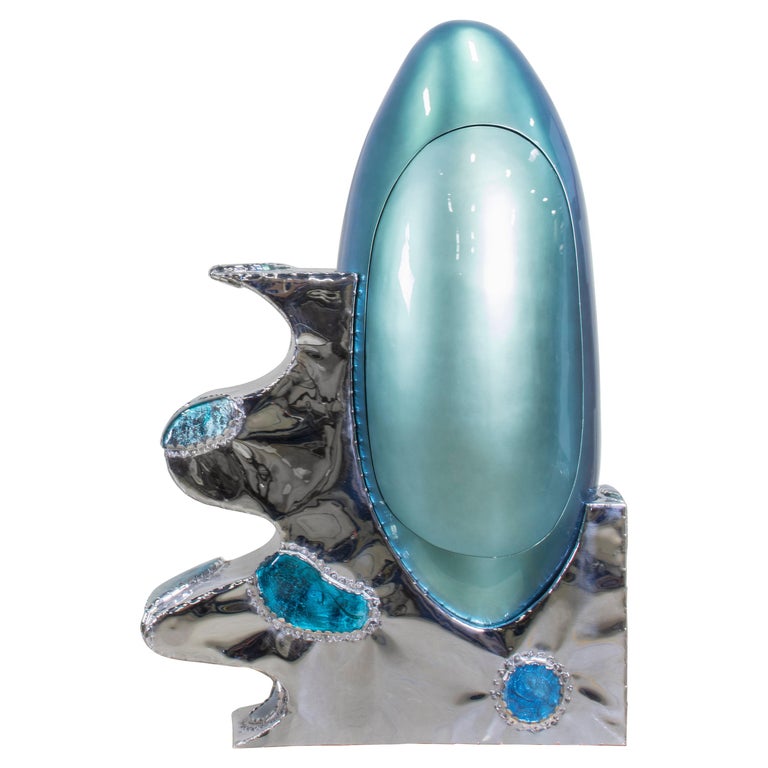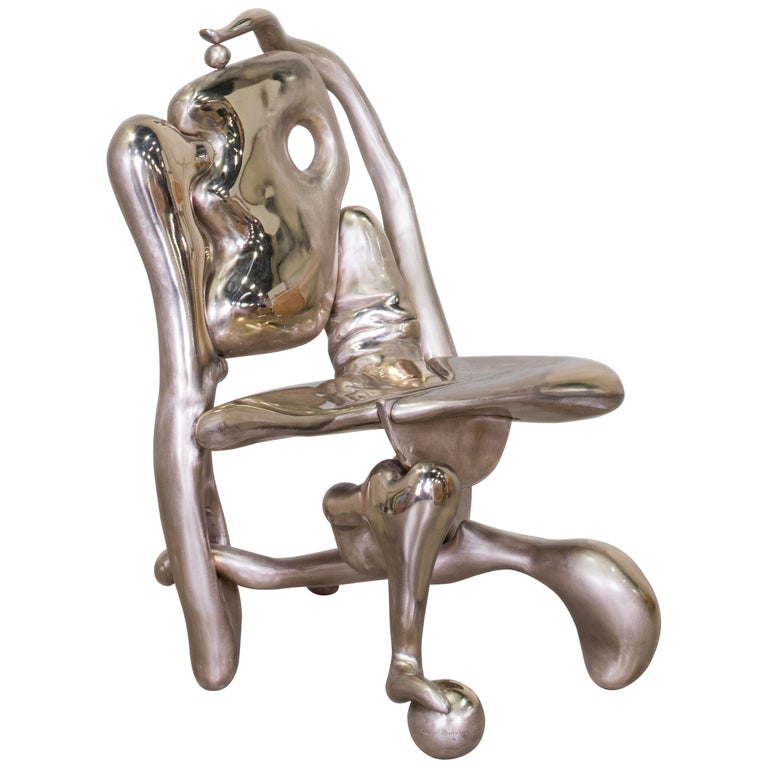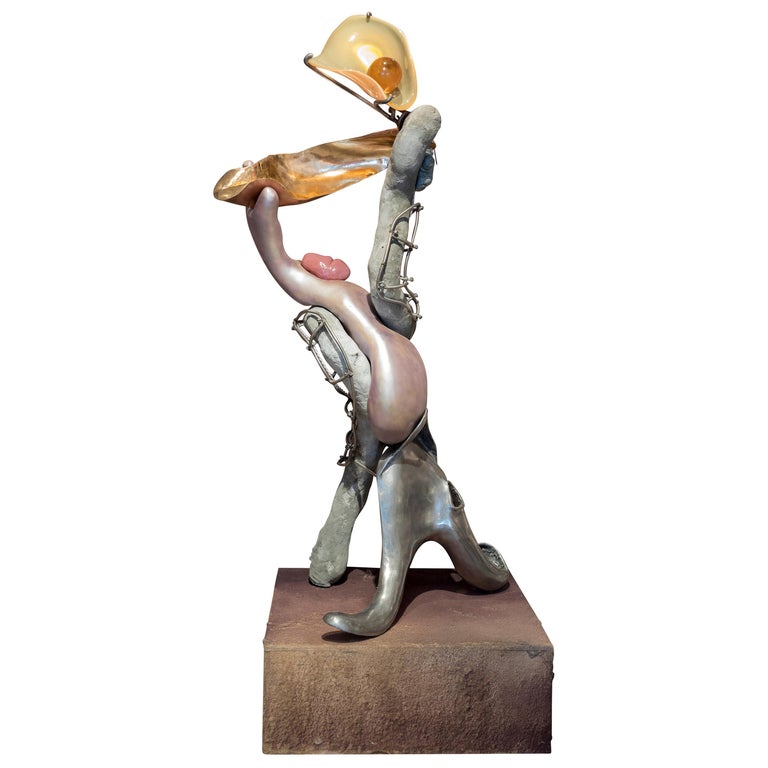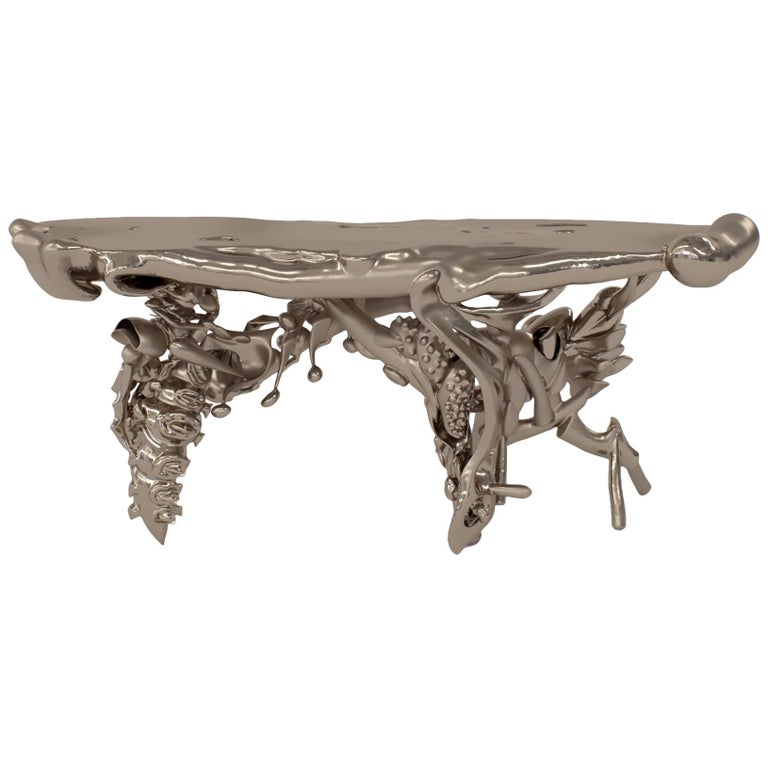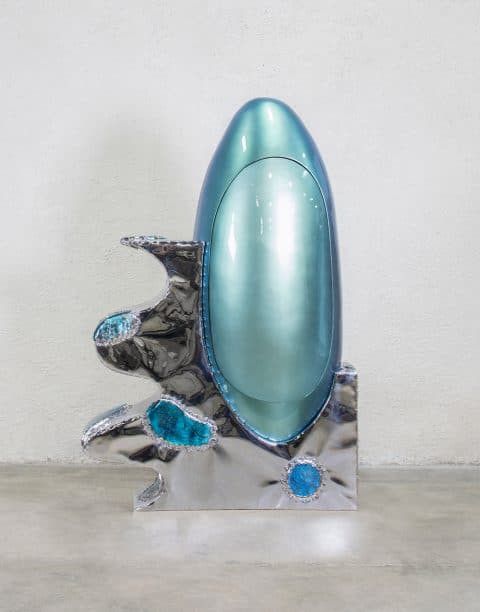
March 29, 2020“Soft Bodies, Hard Spaces,” at Friedman Benda Gallery in New York, featured Misha Kahn‘s newest creations, like the 2020 cabinet Lone Pickle in an Empty Fridge (above). All photos by Daniel Kulka, courtesy of Friedman Benda and Misha Kahn
Misha Kahn’s exuberant creations defy easy categorization — just like the artist himself. Trained as a furniture designer at the Rhode Island School of Design, Kahn gained attention as a maker of sculptural one-off furniture and accessories after being selected by New York’s Museum of Arts and Design for its 2014 biennial, “NYC Makers.” There, he exhibited his bulbous, free-form creations alongside works by such luminaries as Yoko Ono, Paula Hayes and Gaetano Pesce.
Since then, Kahn, 30, has reveled in dabbling in every material he can get his hands on, from pool noodles and plastic bags to hematite and bronze, while blending handcrafting with digital design and machine manufacturing. Along the way, he has attracted numerous high-profile admirers, including Peter Marino and Kelly Wearstler, who have collected his work, and the Corning Museum of Glass in Upstate New York, where earlier this year he collaborated as a guest artist with the museum’s Hot Glass Demo Team.
Kahn’s latest solo exhibition, “Soft Bodies, Hard Spaces,” was on view at Friedman Benda in Manhattan before the gallery temporarily shut down to curb the spread of the novel coronavirus. On the eve of the show’s opening, Introspective met with the artist at the gallery to talk about his wide-ranging work.
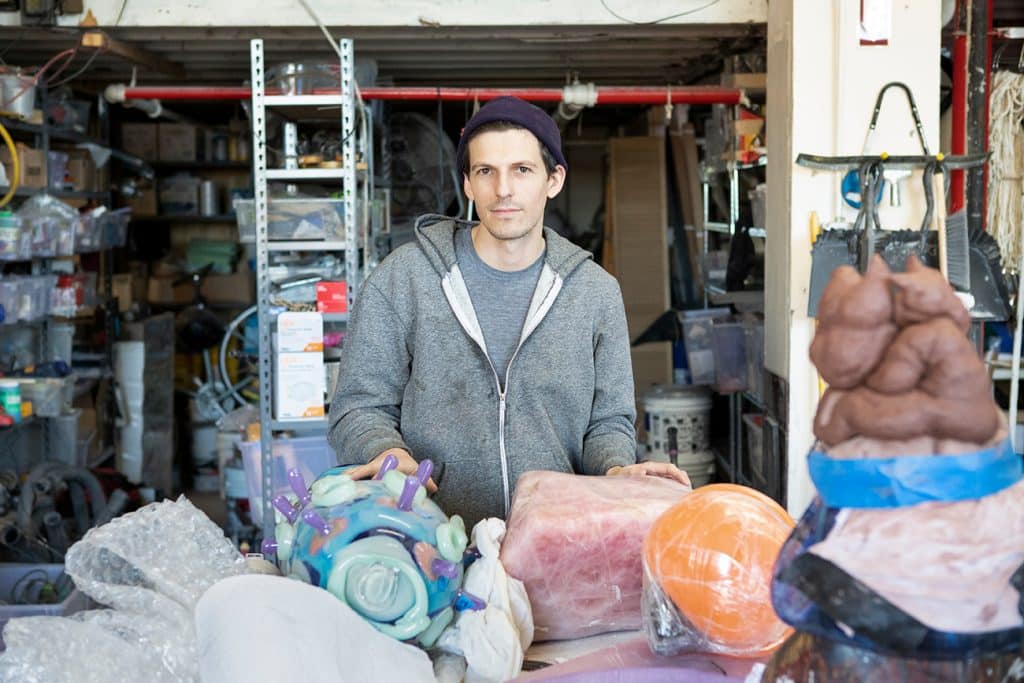
“I’m always drawn to objects that feel like they’re kind of collapsing,” says Kahn, shown here in his Brooklyn studio.
What was your big idea for this show?
Well, I’m a convoluted thinker and maker in a lot of ways, but I was thinking about how design and architecture don’t address our bodies. Our spaces are physically very uniform and stark, vertical and strong.
Work that does address the body is usually figurative, and about the surface of the body rather than the organs, bones and this kind of goopiness. I wanted to play with that. I’m always drawn to objects that feel like they’re kind of collapsing and lounge-y.
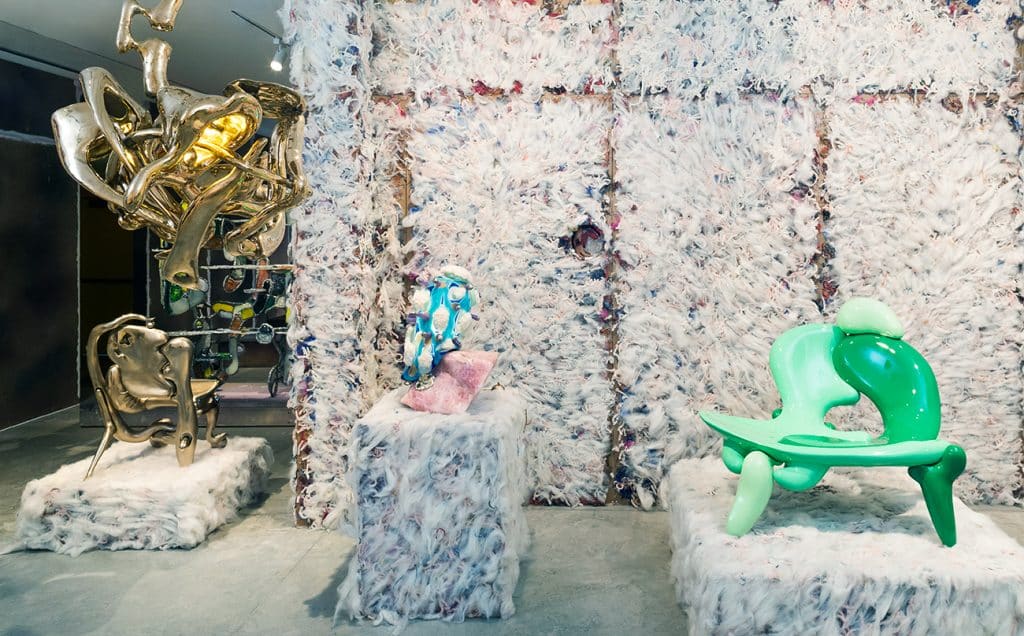
The pieces in the foreground are (from left) the All the Things I Forgot chandelier, 2019; A Little Help Across the Sidewalk Please table lamp, 2020; and Ammonoid Omega chair, 2020.
You frequently design forms on a computer and then make the pieces by hand. Or you do the opposite, scanning hand-sculpted forms into a computer. Do you purposely put these modes of making together?
Well, yeah. It naturally produces a tension I really like. In the case of the tapestry I made for this show, A Loose Understanding of the Spacetime Continuum, it sprang from sculpting with my hands in the virtual reality program Oculus Medium. Then, Mags Stephens did the weaving to translate it into a two-dimensional image. The mohair is hand-spun and -dyed, and each stitch is put in by hand. Taking this thing that would be digitally sort of insignificant and giving it all the gravitas of the hand makes it something else.
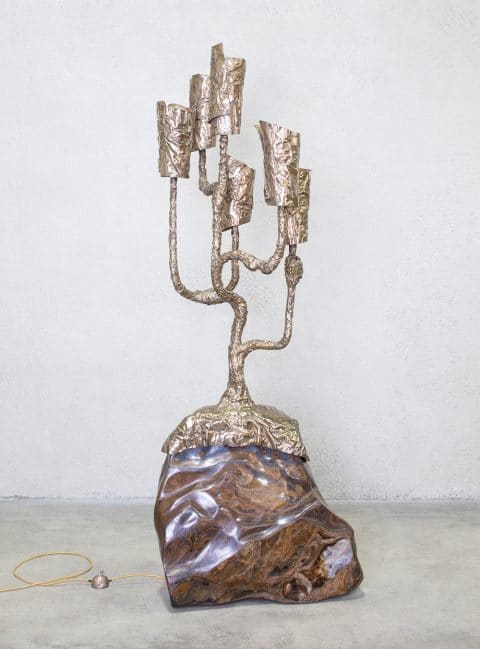
June at the Cloisters lamp, 2019
What about the bronze All the Things I Forgot chandelier?
This chandelier is an odd one, because we carved it in the studio, in foam, which is the traditional way, covered it in plaster and sanded that to the finish we wanted. We then scanned the whole thing and altered a few things digitally. It was produced from the digital file rather than the physical one.
So, it’s an odd intermediary between that fiberglass chair, Style Goes to Paris — which was completely done the old-fashioned way, with carving and molding — and the other bronze pieces, which are fully digital.
Ironically, the pieces that are hand-sketched and hand-molded often look the most digital. It’s funny how they’re usually inverted.
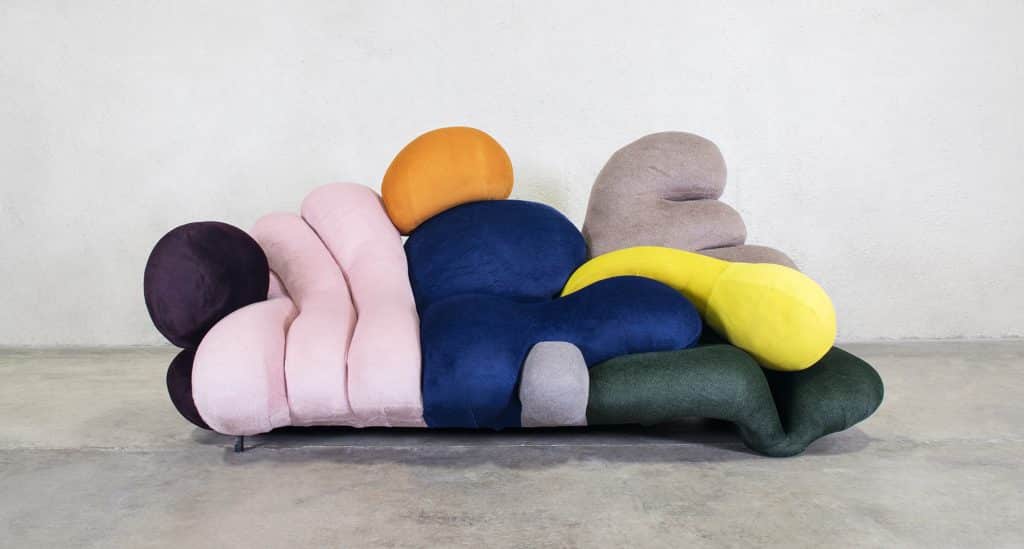
Pig of the Sea sofa, 2019
A lot of makers focus on working with a handful of materials, but your work uses almost everything. Does that just reflect who you are?
Yeah. I’m very curious about how things are made. Different materials are useful for different things, in a technical way but also in a visual way. Concrete adds something really cold and harsh and gnarly, but ceramic or glass can add something really tender. Each material does its own thing. So, I feel that working with all of them is useful and gives you opportunities.
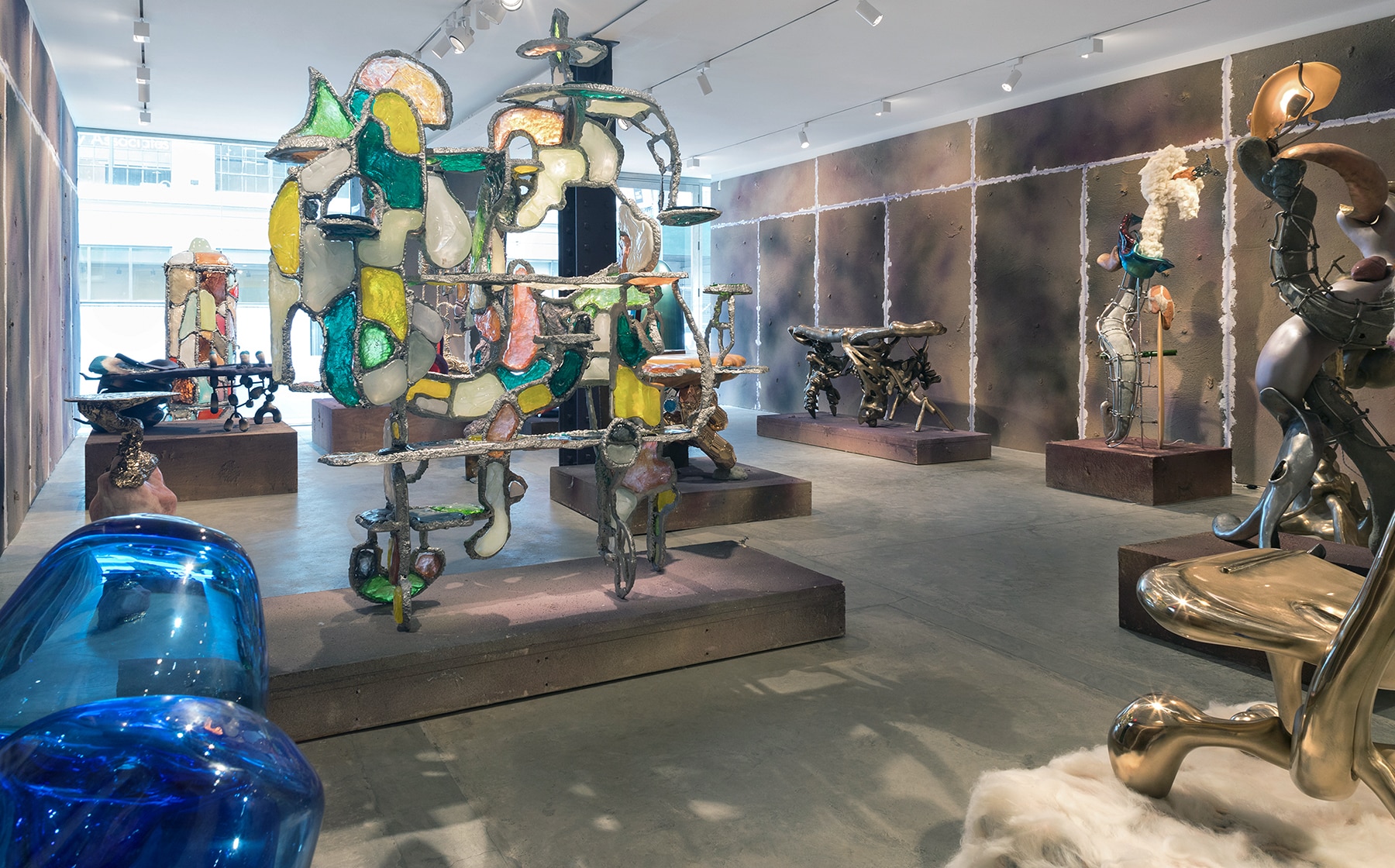
Earlier this year, Kahn worked with the Corning Museum of Glass’s Hot Glass Demo Team to make the aluminum and glass Storage for Light, Emotions, and Transient Thought shelving system (center).
How did you develop the aluminum and glass Storage for Light, Emotions, and Transient Thought shelves?
This was a Corning piece. I don’t know how else it would exist, because it’s just so much glass and took so many people to make. I had two teams working on this for three full days.
I moved my studio last spring to Sunset Park, Brooklyn, where we’ve been able to cast metal ourselves, which is really exciting. The aluminum is cast in little hand-drawn trenches in the sand, so there’s not even a sketch beforehand. We just pour the metal in. Then, the glass was made to fit those shapes.
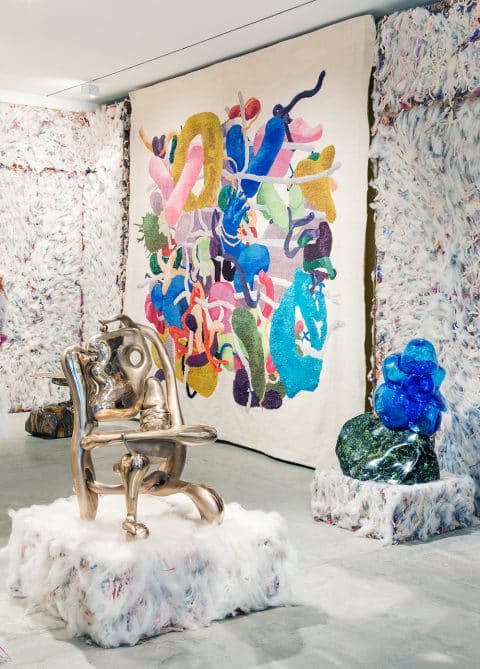
From left: One Shoe, A Fold of Love Handle, a Rogue Dog Ball side chair, 2019; A Loose Understanding of the Space-Time Continuum mohair tapestry, 2020; and Remember Dreams, Access to Ancient Wisdom floor light, 2020
You’ve often used found objects in the past, but not in these new works. Why?
It wasn’t this “I’m over recycling” vibe, even though I wasn’t using found objects this time. With this show, I just wondered what it would feel like to use handmaking and technology in a really optimistic and empathetic way, where the materials all seem to understand each other, and where the new technology can be easily integrated rather than replacing or fighting with any of the handmade stuff. They’re just friends.
How did you end up working in the gallery world rather than designing furniture for mass production?
I probably would have been so bad at that. It all happened organically. I was just making my own very wonky objects and wasn’t necessarily expecting to have this gallery career. But now, I have more resources and people, and all kinds of things are becoming possible. It’s this really grand playpen of materials and processes, which is so fun. I’m making the objects that I would want to have around me — these really unusual things that feel very narrative and curious.
